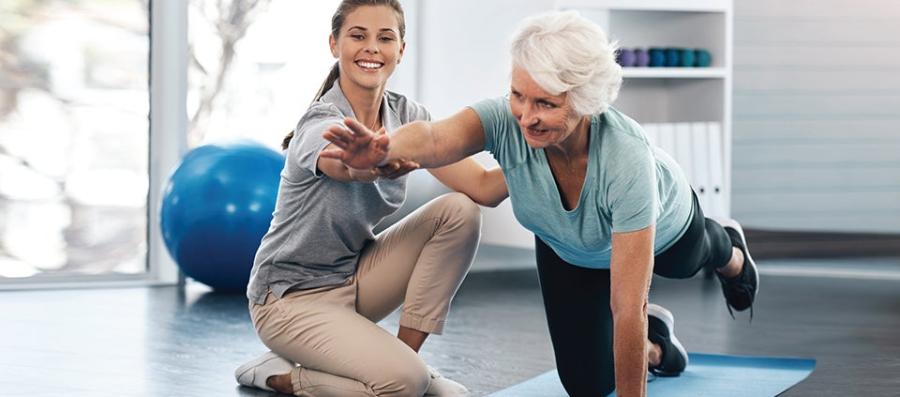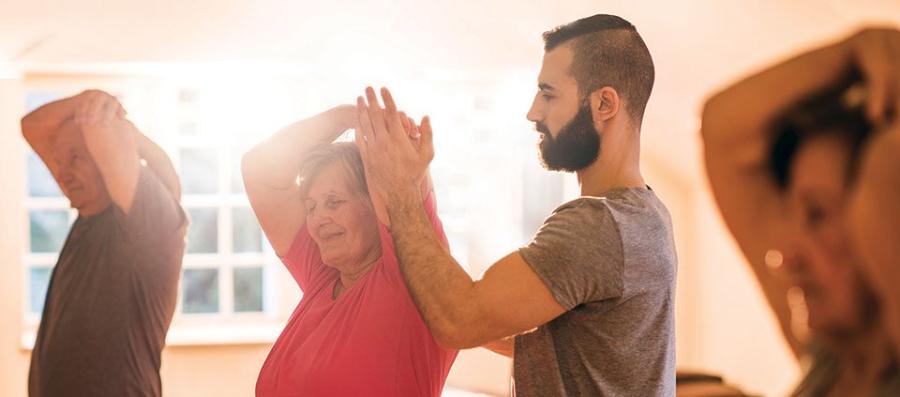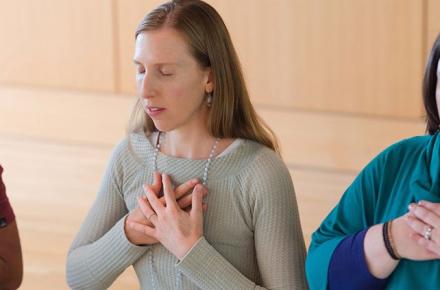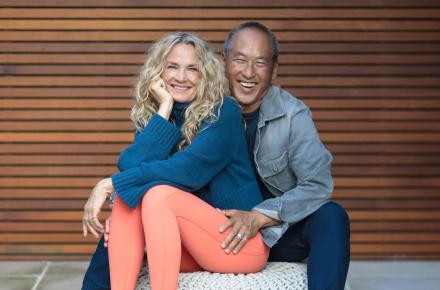What to Expect in a One-on-One Yoga Therapy Session


People come to yoga therapy for a myriad of reasons, but in a larger sense, the practice always has the same goal: empowering clients to care for themselves using mind-body practices and lifestyle changes. So every yoga therapy session—like every yoga class—follows a similar pattern and format. At the same time, however, each yoga therapy session is customized for the client—and because everyone is different, the yoga “prescription” is different for everyone.
I’ll often create a session plan for my returning clients, but if they show up and it’s clear that what I have planned isn’t what’s going to serve them best, I will reassess, and together we’ll create a goal for the session and practices that are appropriate for the situation. That’s why yoga therapists have 800 hours of training—so we can gauge what is needed in the moment and adhere to the ethical practice of ahimsa (non-harming).
Here’s a look at how a typical one-on-one yoga therapy session unfolds.
1. The Intake Form
The first session with a client begins with a review of their personal history form, which they fill out before we meet. The form is designed according to the model of the koshas, so we get a full picture about what’s going on with the client at all levels—physically, energetically, emotionally, in the wisdom body, in the bliss body—not just the pain or other issue that might have brought them to us, though we do ask about that, too. The questions target each of the layers, touching on everything from sleep to mood to their thought patterns to what brings them joy. We want to know the basics of their family status, lifestyle, and occupation: Do they have kids? Are they working a stressful job? What is their diet like? How often do they exercise?
The form also asks clients what they would like to achieve in yoga therapy—what they hope to get out of it. If they don’t know, that’s fine; by the end of the first session, they usually have some ideas. They might come in with a strained muscle or chronic pain, and leave inspired to develop a meditation practice or spend more time in nature.
Throughout the session, we can come back to the intake form and ask additional questions or expand on a topic, giving both client and therapist more information and clarity. Assessment is a key component in the yoga therapy session It’s a process of inquiry to help us both discover the underlying issues they’re dealing with, and how yoga therapy can serve them.
In this part of the session, we also take a few moments to let clients know what to expect for the rest of our time together. For those who have not experienced yoga therapy before, the therapist will explain that it focuses on well-being and health promotion; it’s not about curing disease. It’s vital for us to make that clear, so that clients understand what we do, and also so the therapist is working within their scope of practice. In general, we let the client lead the session, according to what’s arising for them and we support them in building self-awareness. Mindful, compassionate presence and active listening are necessary skills of a yoga therapist.
2. The Check-In
After going over the intake form, or to start off a session with a returning client, we’ll do a check-in to assess how they’re feeling right now and (if it’s a returning client) what might have changed since they did the intake form or since the last session. This is also a good time for educating the client on how yoga might work to address what they’re dealing with; for example, if an older adult reports having lost their balance and taken a fall since the last session, the therapist might want to share some information about how they can reduce the risk of falling, and how yoga might help. Or, if they’ve been working on their balance, we might touch base on how that’s been going.
3. Body-Awareness Practice
Once the check-in is complete, we move into the experiential part of the session. I always begin with a guided body-awareness practice. Depending on the client’s issues and abilities, this could be done sitting in a chair or lying on a mat—whatever supports them to be as comfortable and fully aware of their body as possible. This is often a body scan, in which the therapist guides the client in noticing sensations and areas of ease or discomfort throughout the body.
Afterward, they can share about what came up for them during the exercise—whether it was pain or relaxation or simply realizing that they hadn’t been aware of what was going on in certain areas of their body before doing the practice. This is all helpful information for both client and therapist as you move into the next phase of the session. The body-awareness practice can also be thought of as an assessment for both the client and therapist.
4. The Practice
I almost always start this part of the session with a breath-awareness exercise, particularly with first-time clients, and then segue into a gentle movement practice in which they try synchronizing breath with movement—something simple like Sun Breaths. Watching a client lift and lower their arms gives the therapist an opportunity to assess where they are. Then we’ll move through a joint-freeing sequence to warm them up before moving into more vigorous poses. This is also an opportunity to assess their range of motion, and get information about what poses they may or may not be able to do.
In light of discussions regarding physical assists, it’s important to note that in yoga therapy, touch is used only with permission, and only to direct awareness, not to move bodies—for example, I might touch a client’s foot to help them direct their focus toward becoming more grounded and stable.
Next, we move into postures that may work well for the client given their unique history and needs. For example, if they’re experiencing arthritis or pain in the joints, a therapist might offer poses that could create greater awareness of the muscles supporting the joints. The poses can also be chosen in order to cultivate certain qualities, such as a Warrior pose to enhance confidence, or a Half Moon pose with the support of the wall to create a sense of spaciousness and safety. We’re always working with the whole being, not just one aspect.
Finally, I’ll have them come back to the chair or the mat for some gentle movement along with the breath awareness, such as Wind-Relieving pose or maybe a supported Bridge with a block under the sacrum. Then we’ll segue into a guided visualization and relaxation for about seven to 10 minutes. Here’s where knowing what gives a client a sense of joy can help—if they love the beach, for example, then maybe the therapist will weave that into the guided visualization.
5. Integration
Following the relaxation, I’ll bring the client back to a seated position. At this point, the client might share about their experience during the practice, or the therapist might offer a moment for them to focus on an affirmation or intention. Maybe we’ll do a mudra for stability or self-confidence as a way to seal in the practice. I would probably use the phrase “hand gesture” rather than “mudra,” just as I might talk about the colors that come to mind in relation to areas of the body, rather than the chakras. We want to use language that clients can understand and relate to, which often means avoiding Sanskrit terminology.
6. Next Steps
If a client is willing to practice at home, I’ll give them a small homework assignment that builds on what they’ve done in the session. For example, if they’re working on balance, I might recommend that they do toe stands while they’re brushing their teeth or stand on one leg while they’re washing dishes. Or I might suggest that they find a word that speaks to them, and use it as a mantra to center and calm them. I always encourage meditation—it doesn’t have to be seated, maybe it’s walking or working in their garden. If asana is a big part of their yoga practice, we’ll talk about how they can bring their new awareness onto the mat—and into their daily lives.
Find out more about the Kripalu School of Integrative Yoga Therapy.















































